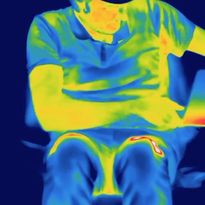Students solve two mysteries on thermal energy that demonstrate that heat is a form of energy that moves from areas of high heat to low heat. Students are hired by the Better Business Bureau to put their knowledge of heat transfer to the test by investigating two heat-related claims. The unit culminates in an engineering challenge in which students are tasked with making a low-cost, highly effective cooler that can compete with the leading cooler on the market.
- Lesson 1

Solve: Our Life in Thermal Imaging + Winter Glove Mystery
Choose to solve a live video mystery on thermal imaging or an animated mystery on false claims Willy Warm is peddling about his gloves! Utilizing new vocabulary and guided questions, students discover how heat moves and the materials that can slow its movement. (Live Solve: 90-105 minutes; Animated Solve: 80 minutes)
- Lesson 2

Make: Lab Stations: Experience Thermal Energy Transfer
Students design and conduct their own experiments to determine the best insulator and conductor. (100 minutes)
- Lesson 3

Engineer: Apply your Knowledge to Engineer Your Own Insulator and Conductor
It’s time for a challenge! Who can design an insulator that keeps an ice cube colder than the leading brand? Building off what they learned in the “Make” and based on data they collect on different materials, learners will design the best insulator for this challenge. (200 minutes)
